
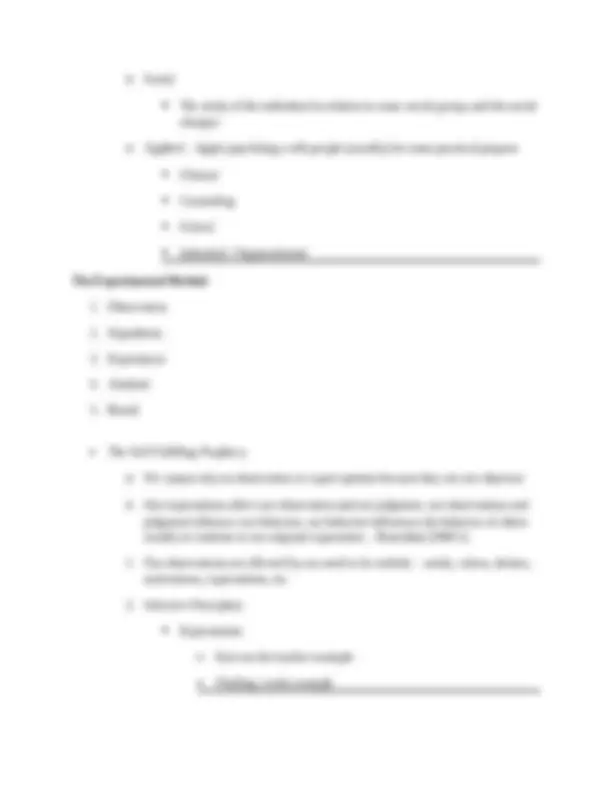
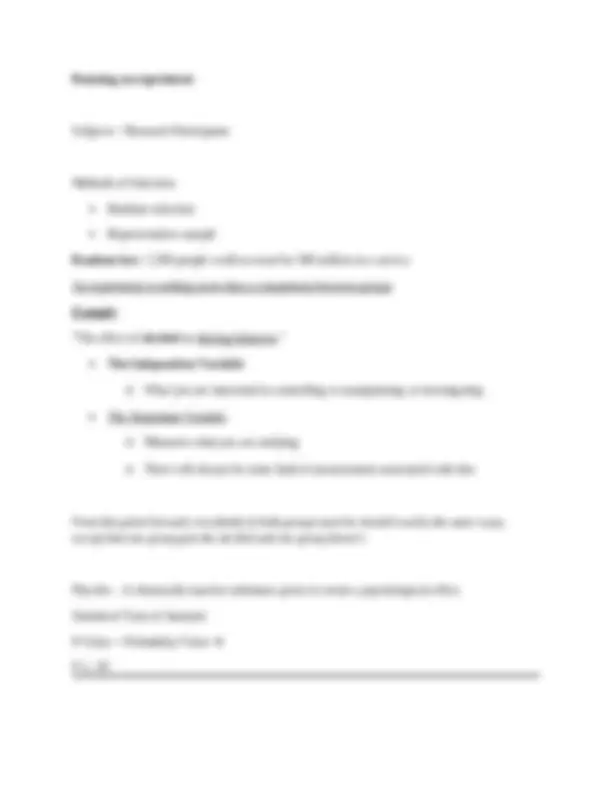
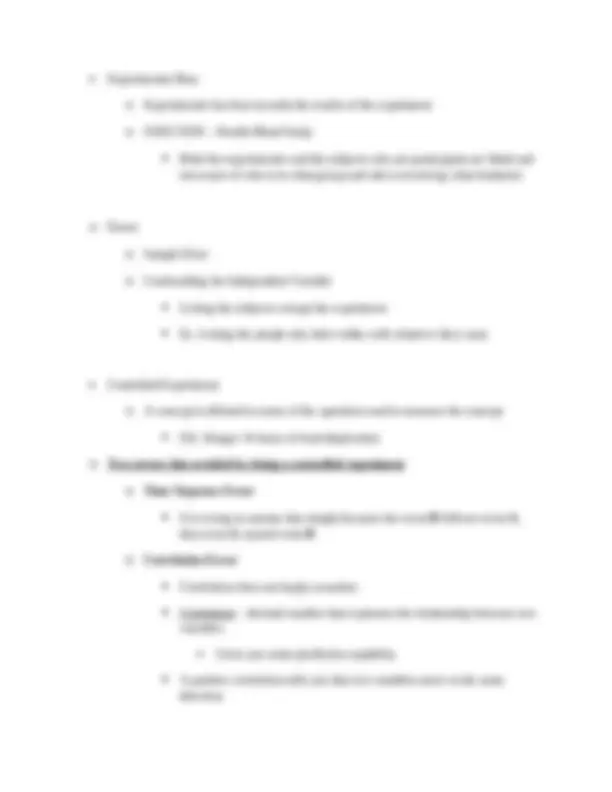
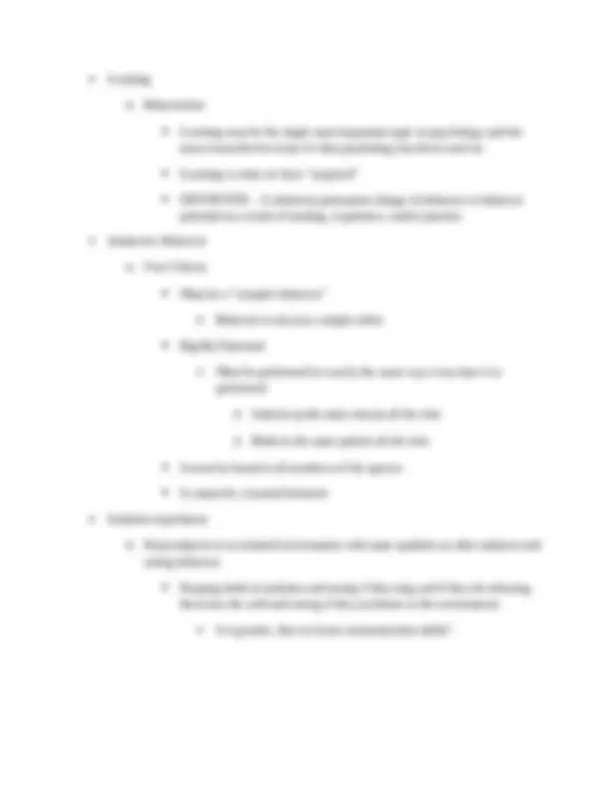
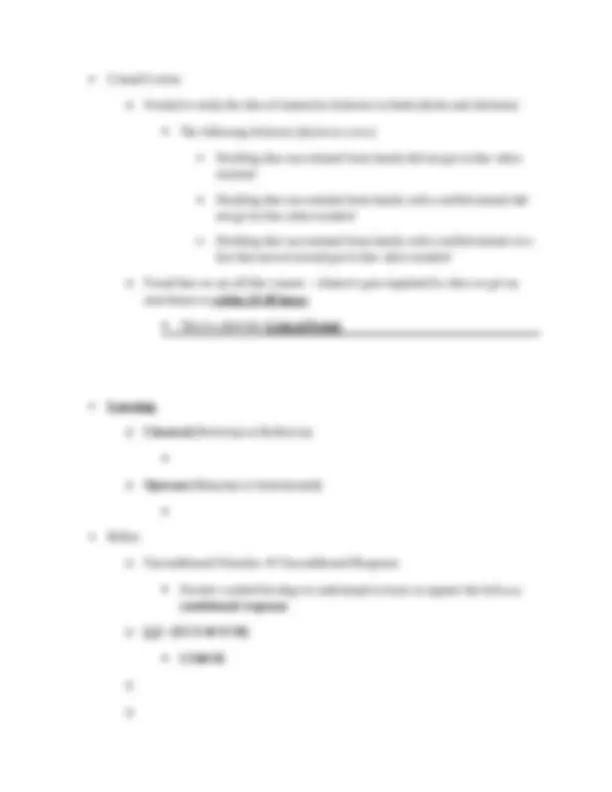
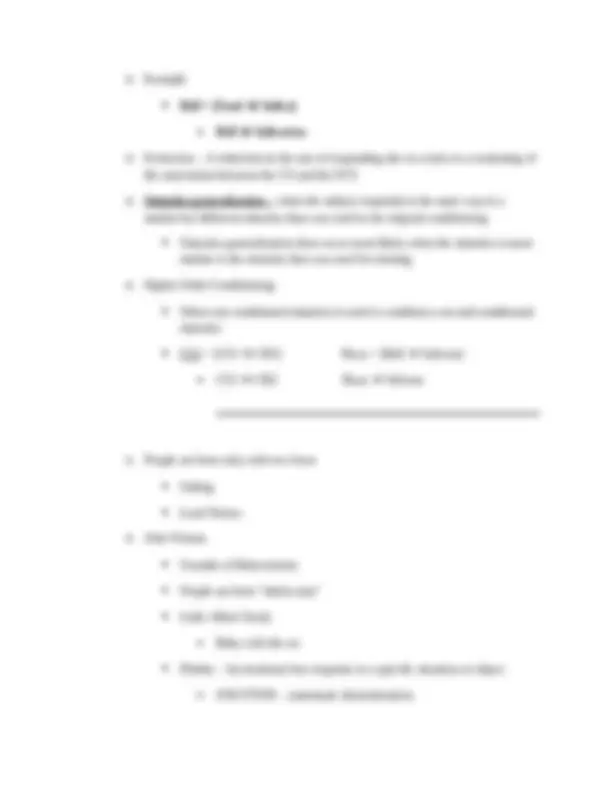
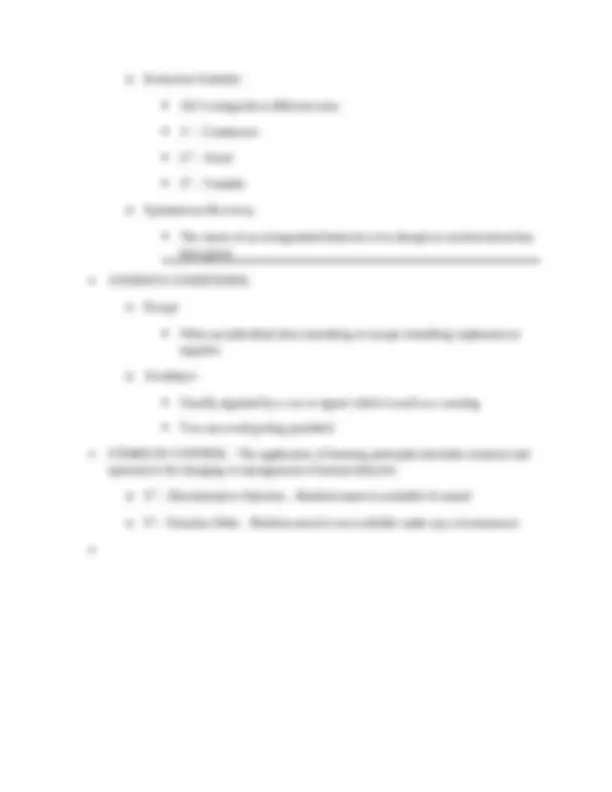
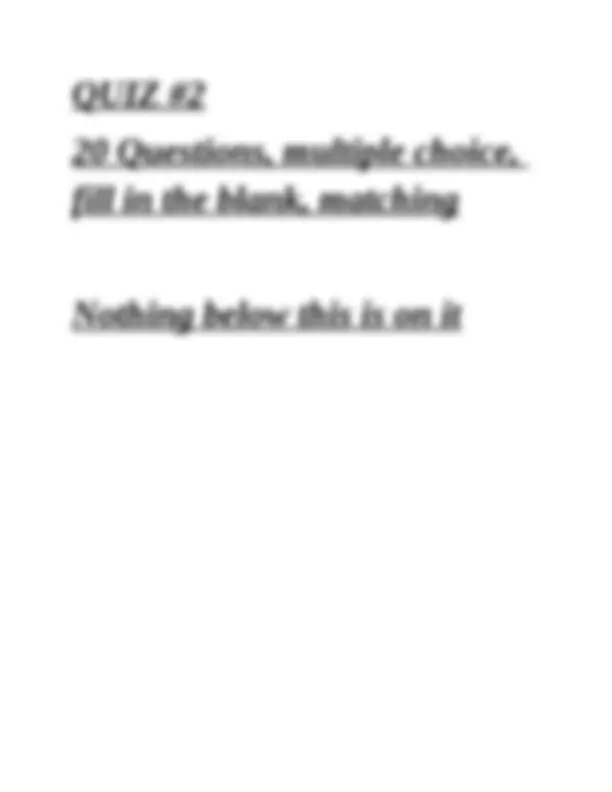
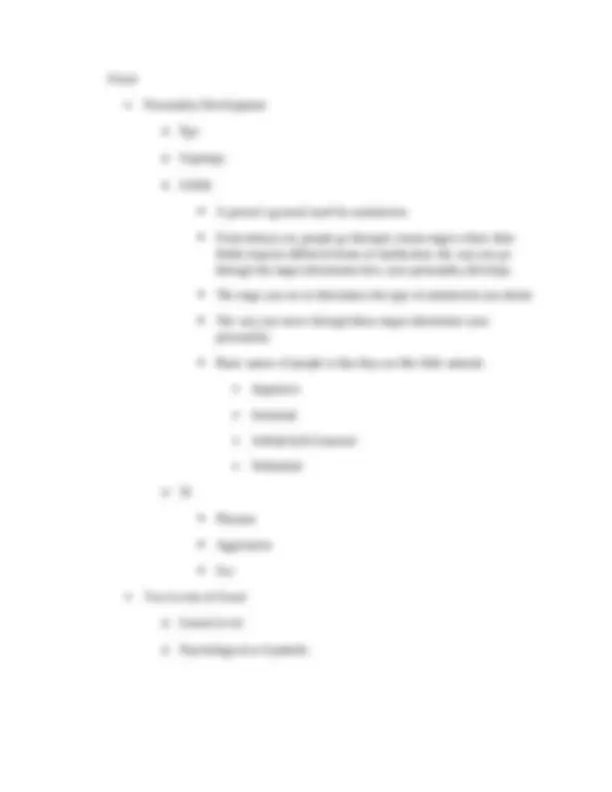
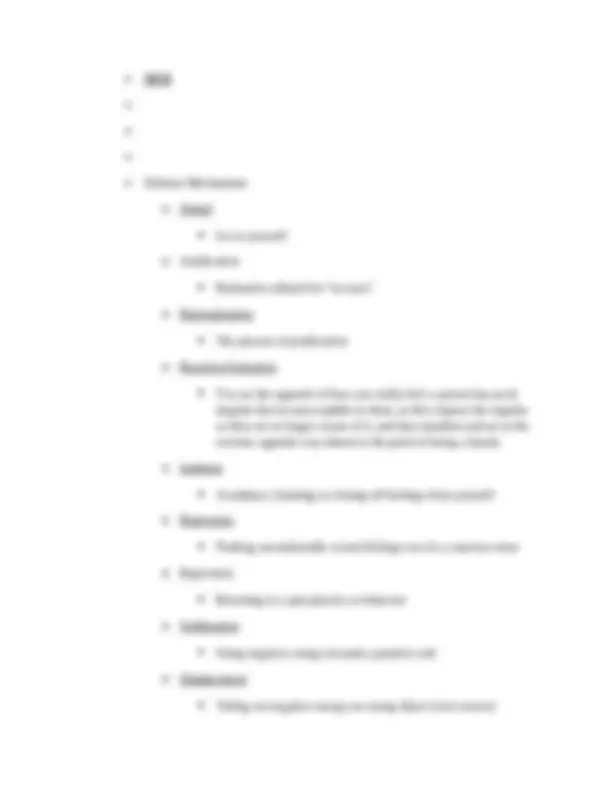
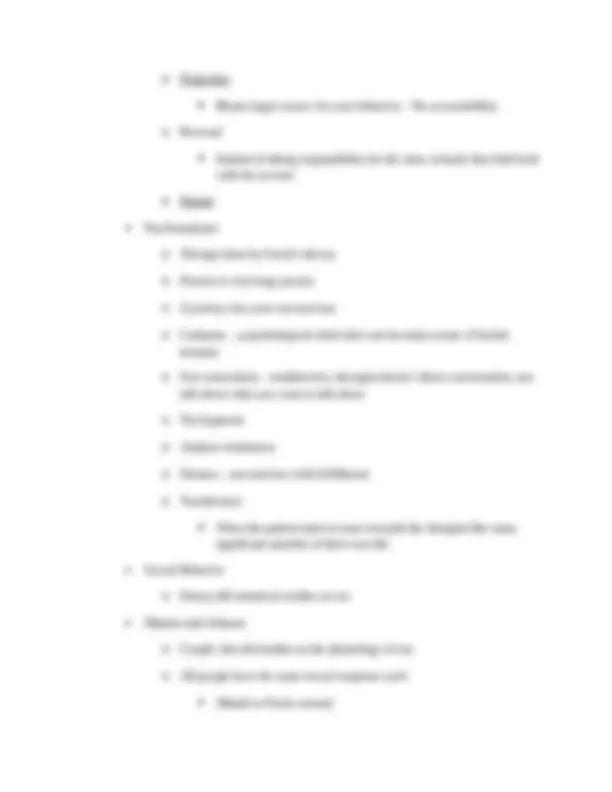
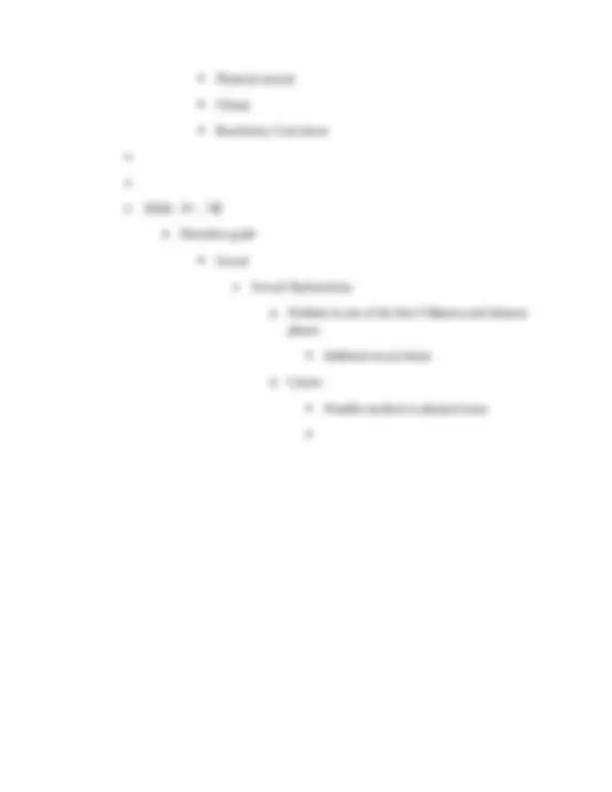
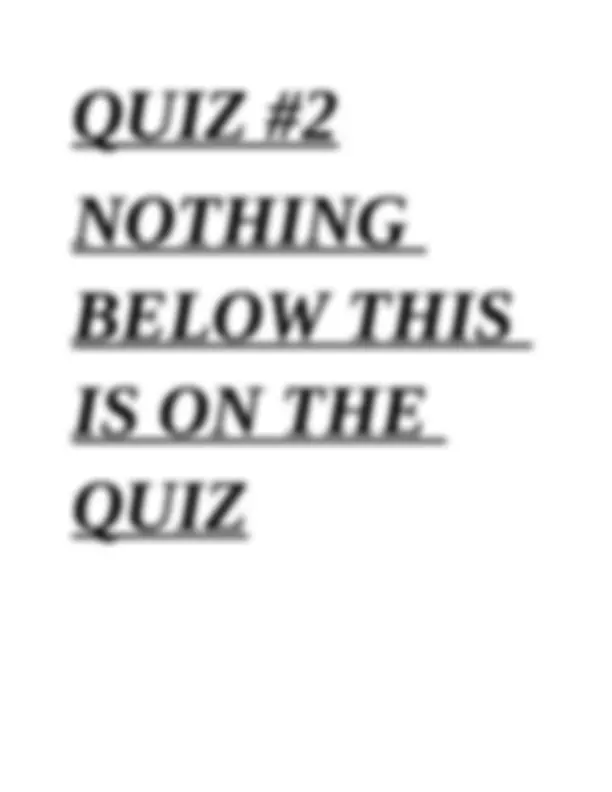

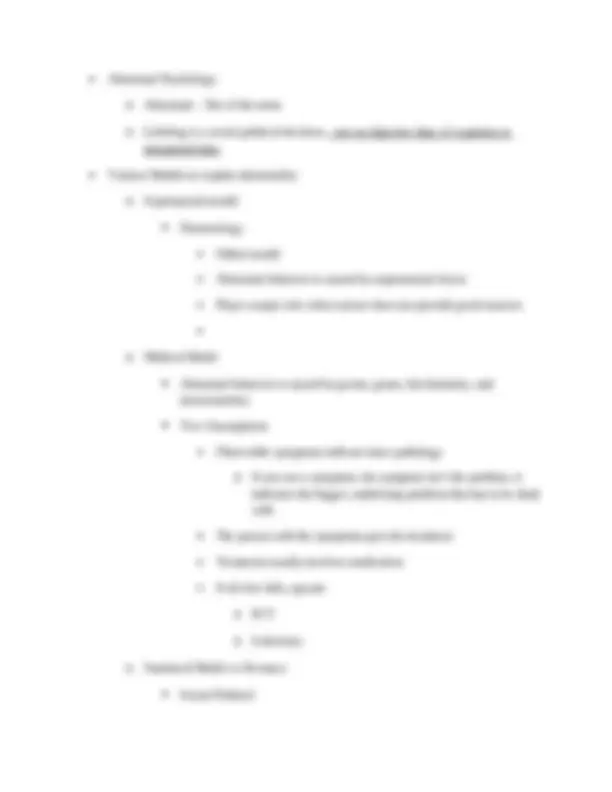
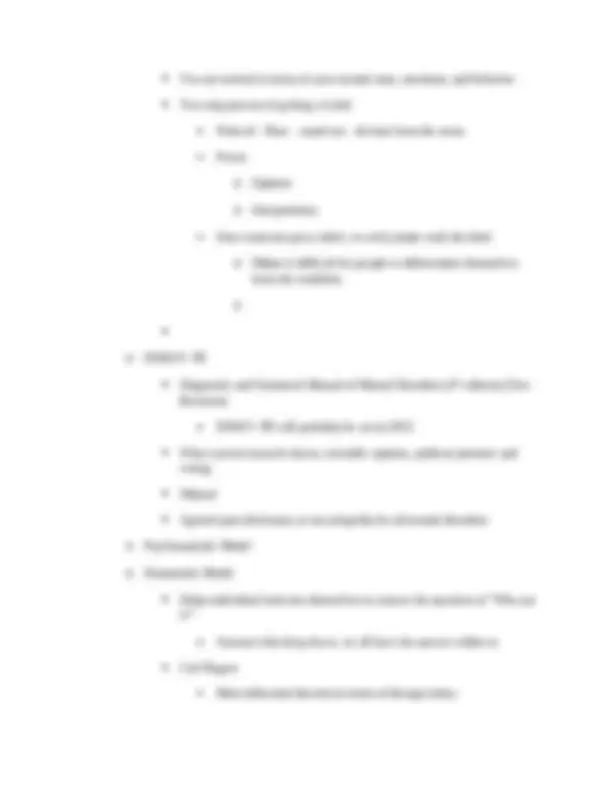
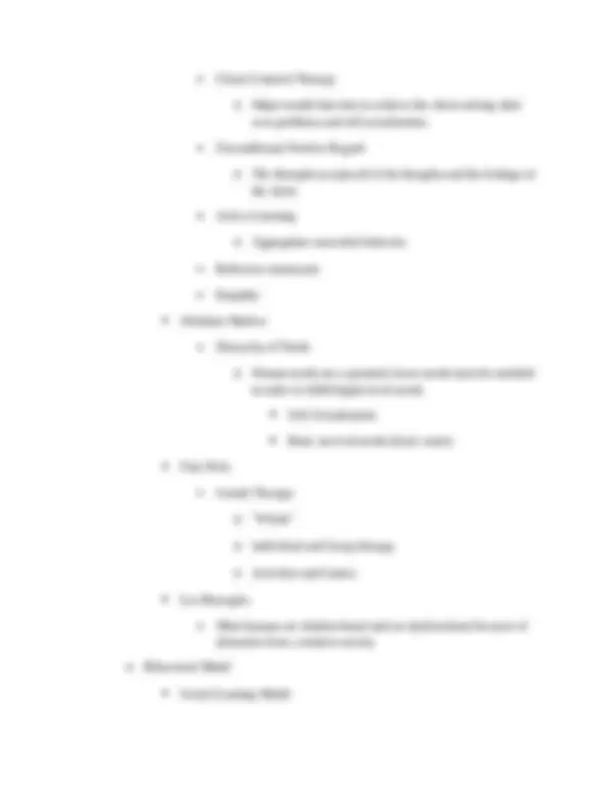
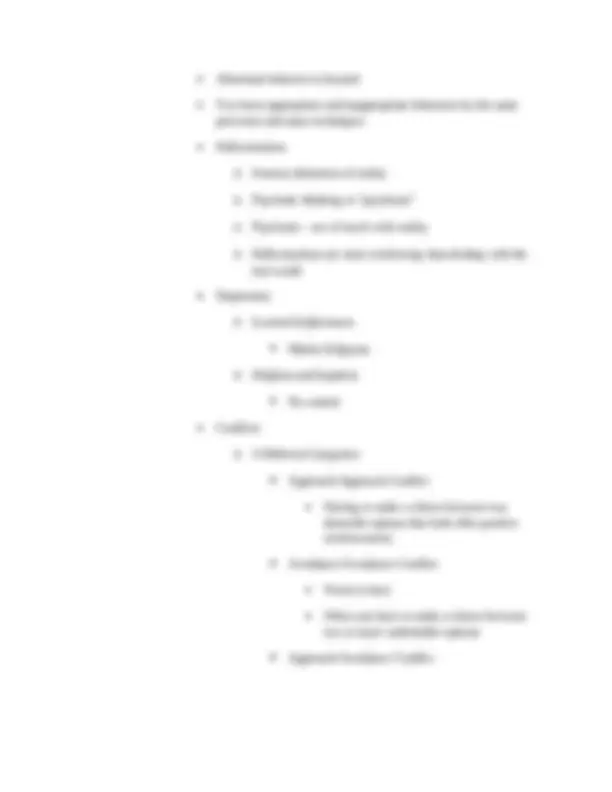
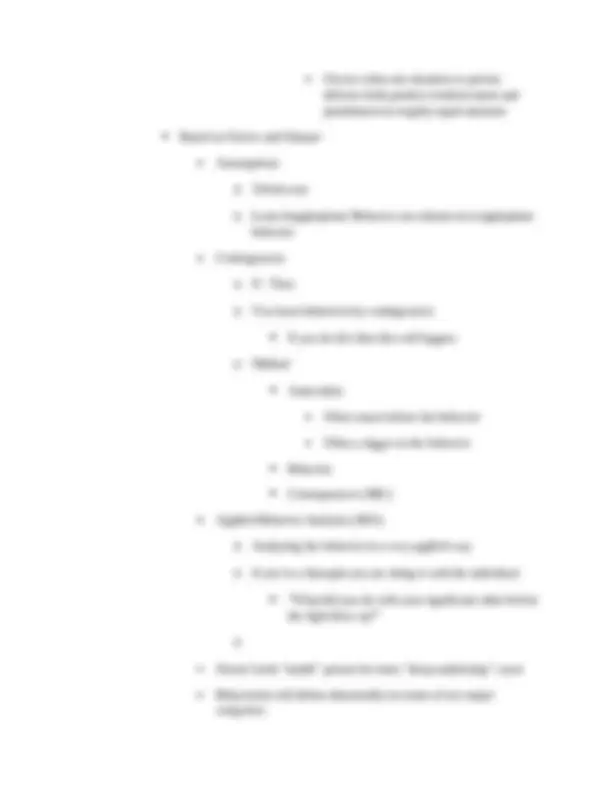
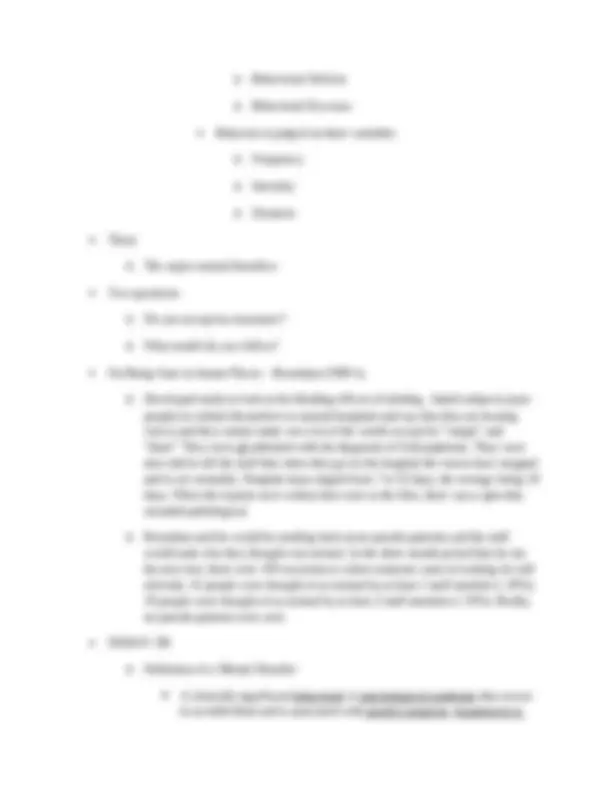
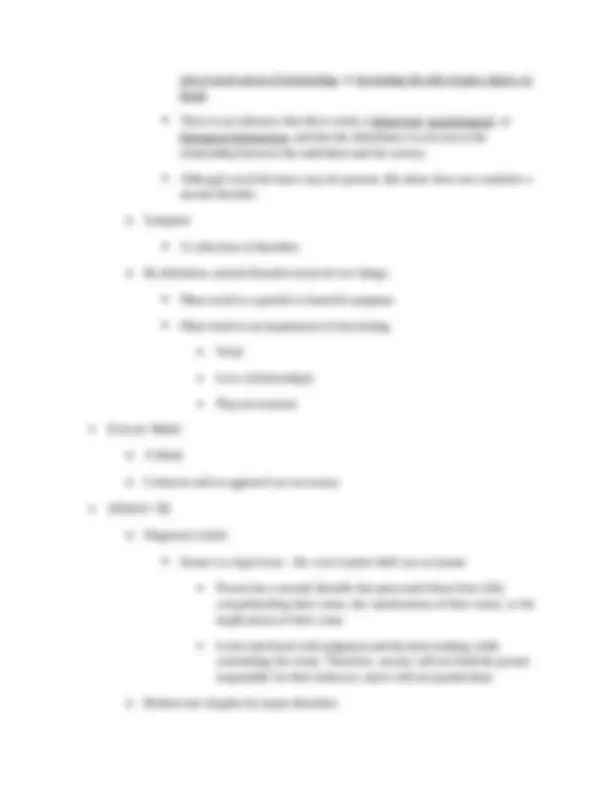
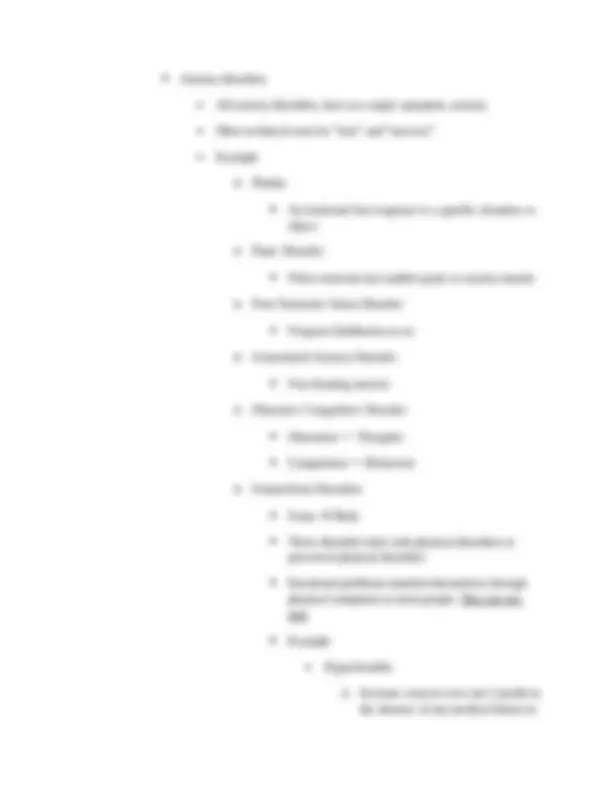
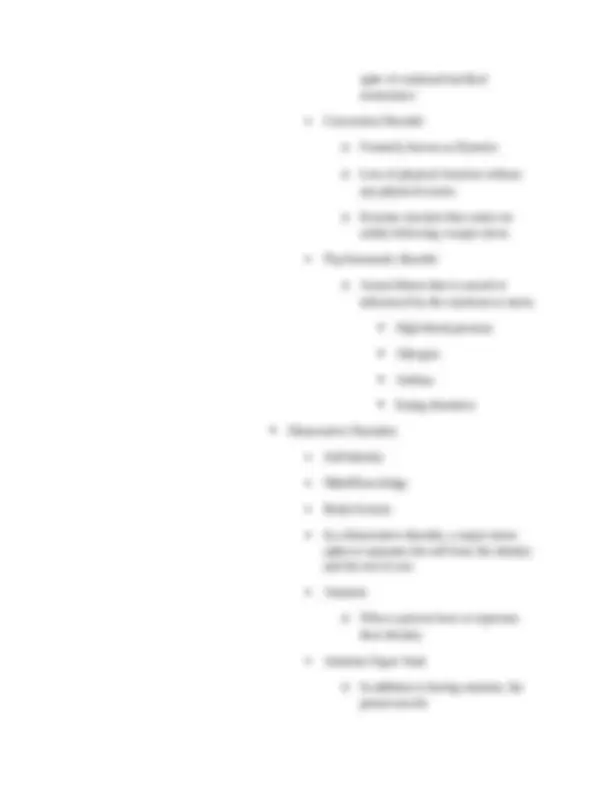

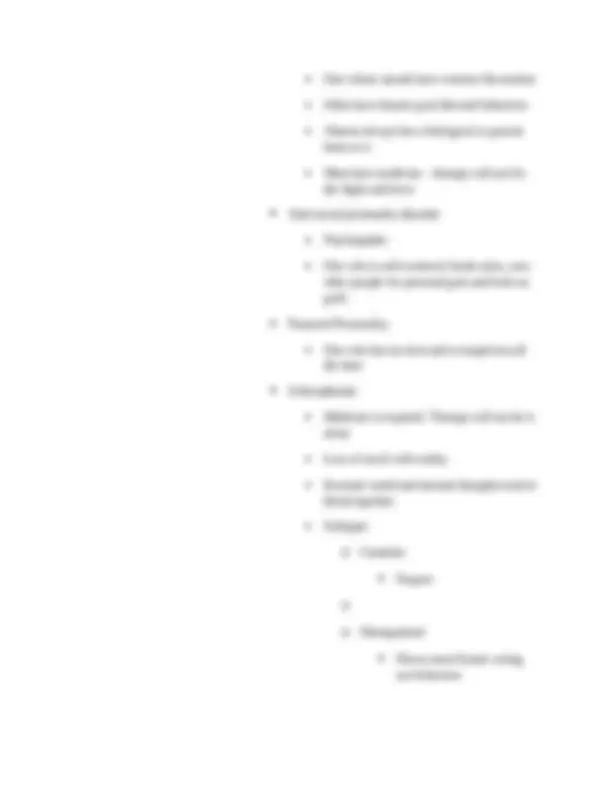


Study with the several resources on Docsity

Earn points by helping other students or get them with a premium plan


Prepare for your exams
Study with the several resources on Docsity

Earn points to download
Earn points by helping other students or get them with a premium plan
Community
Ask the community for help and clear up your study doubts
Discover the best universities in your country according to Docsity users
Free resources
Download our free guides on studying techniques, anxiety management strategies, and thesis advice from Docsity tutors
Various concepts in psychology, including individual differences, learning theories, and abnormal behavior. Topics covered include the self-fulfilling prophecy, imprinting, classical and operant conditioning, defense mechanisms, and disorders according to the dsm-iv-tr. Students will learn about the works of key psychologists such as conrad lorenz, john watson, and freud, and gain insights into human behavior and development.
Typology: Study notes
1 / 33

This page cannot be seen from the preview
Don't miss anything!


























The scientific study of the behavior of organisms Zeitgeist – The spirit of the times 1879 – Date of the beginning of modern psychology Wilhelm Wundt – Father of modern psychology John Watson – Psychology as the Behaviorist Views it Sigmund Freud – Psychoanalysis o The development of personality from childhood and stages
History of Psychology Where Psychology is in the 21st^ century Various Models or Schools o Biological or Medical Model Caused by genes, biochemistry, or biology o Behavioral or Learning Model Look at the environment that the subject grew up/is in and what they have learned Ex: what in someone’s background taught them to become depressed o Psychoanalytical or Freudian Model Behavior is based on very early childhood experiences, past conflicts in your life and how you handled those, and unconscious motivations o Cognitive or Thoughts/Beliefs Model Our behavior is controlled by our thoughts or belief systems Ex: if you learned you were “worthless” then you will tend tot act depressed based on that initial belief – because you learned that idea you act it out o Humanistic Our strengths come in our individual differences and uniqueness o Eclectic ( to blend ) Use what is relevant to make an analysis Specializations Academic / Basic / Research – Teach at universities and do research; Don’t see patients o Experimental o Developmental
Running an experiment Subjects = Research Participants Methods of Selection Random selection Representative sample Random fact: 1,500 people could account for 300 million in a survey An experiment is nothing more than a comparison between groups Example : “The effect of alcohol on driving behavior.” The Independent Variable o What you are interested in controlling or manipulating or investigating The Dependant Variable o Measures what you are studying o There will always be some kind of measurement associated with this From this point forward, everybody in both groups must be treated exactly the same ways, except that one group gets the alcohol and one group doesn’t. Placebo – A chemically inactive substance given to create a psychological effect. Statistical Tests of Analysis P-Value = Probability Value P ≤.
Experimenter Bias o Experimenter has bias towards the results of the experiment o SOULTION – Double Blind Study Both the experimenter and the subjects who are participants are blind and not aware of who is in what group and who is receiving what treatment o Errors o Sample Error o Confounding the Independent Variable Letting the subjects corrupt the experiment Ex. Letting the people mix their vodka with whatever they want Controlled Experiment o A concept is defined in terms of the operation used to measure the concept EX- Hunger hours of food deprivation o Two errors that avoided by doing a controlled experiment o Time Sequence Error It is wrong to assume that simply because the event B follows event A , that event A caused event B o Correlation Error Correlation does not imply causation Correlation – decimal number that expresses the relationship between two variables Gives you some prediction capability A positive correlation tells you that two variables move in the same direction
Learning o Behaviorists Learning may be the single most important topic in psychology and the most researched in terms of what psychology has been used on. Learning is what we have “acquired” DEFINITION – A relatively permanent change in behavior or behavior potential as a result of training, experience, and/or practice. Instinctive Behavior o Four Criteria Must be a “ complex behavior” Behavior is not just a simple reflex Rigidly Patterned Must be performed in exactly the same way every time it is performed o Salmon up the same stream all the time o Birds in the same pattern all the time It must be found in all members of the species It cannot be a learned behavior Isolation experiment o Keep subjects in an isolated environment with same qualities as other subjects and noting behavior Keeping birds in isolation and seeing if they sing and if they do releasing them into the wild and seeing if they acclimate to the environment. Is it genetic, that we learn communication skills?
o Example Bell + [Food Saliva] Bell Salivation o Extinction – A reduction in the rate of responding due to a lack or a weakening of the association between the CS and the UCS o Stimulus generalization – when the subject responds in the same way to a similar but different stimulus than was used in the original conditioning Stimulus generalization does occur most likely when the stimulus is most similar to the stimulus that was used for training o Higher Order Conditioning When one conditioned stimulus is used to condition a second conditioned stimulus CS2 + [CS1 CR1] Buzz + [Bell Salivate] CS2 CR2 Buzz Salivate o People are born only with two fears Falling Loud Noises o John Watson Founder of Behaviorism People are born “tabula rasa” Little Albert Study Baby with the rat Phobia – An irrational fear response to a specific situation or object SOLUTION – systematic desensitization
o Hierarchy Construction Sit with person and talk, making a list (20 or 30 items) of the fear situation going from least scary to most scary Takes about a good hour Small little steps o Relaxation Training Deep muscle relaxation Audio recording is played that teaches you to step by step relax your body and put your mind at ease o Pair the previous two Relax body while recounting each item on the list Satiation – A lessened tendency to respond due to prolonged exposure to the reinforce. o The rat gets filled; he’s not hungry anymore; so why bother pressing the bar? When you use food as an enforcer the behavior will cease or lessen when the animal is not hungry (From reinforcement) Types of Reinforcement
o Extinction Schedule All 3 extinguish at different rates 1 st^ – Continuous 2 nd^ – Fixed 3 rd^ – Variable o Spontaneous Recovery The return of an extinguished behavior even though no reinforcement has been given AVERSIVE CONDITIOING o Escape When an individual does something to escape something unpleasant or negative o Avoidance Usually signaled by a cue or signal which is used as a warning You can avoid getting punished STIMULUS CONTROL - The application of learning principals (includes classical and operant) to the changing or management of human behavior o SD^ – Discriminative Stimulus – Reinforcement is available if earned o SΔ^ – Stimulus Delta – Reinforcement is not available under any circumstances
Psychosexual Development o Oral Birth – 1.5 years old --- Infant Establish Trust o Anal 2 – 4 years old --- Toddler Spend a lot of time learning continence Self-control Starts with the bowels and the bladder You learn the psychological pleasure of self-control o Phallic 5 – 7 Years old --- Preschool K (1) Sexual identity / Sexual orientation Learns differences between males and females Male Oedipal Complex o Breaks psychological bond with mom and buries it o Shifts his focuses from female identify to male identify o Latency 7 – 13 Years old --- Elementary school Reinforces previous stages o Genital Puberty and older Heterosexual
Ability to maintain a relationship 3 Parts of Personality o Id Little animal Motivated by basic needs Sex, aggression, biology Irrational Pleasure Principal o Ego Mediator Logic Reality Principal o Super Ego Values/morals Your conscious 3 Levels of Awareness o Conscious Things being thought of currently or easily retrievable o Preconscious Information is buried somewhere Have to do work to remember Traumatic or anxiety issues related o Unconscious Subconscious Repressed memories
o Projection Blame larger source for your behavior – No accountability o Reversal Instead of taking responsibility for the issue at hand, they find fault with the accuser o Humor Psychoanalysis o Therapy done by Freud’s theory o Process is very long (years) o A journey into your unconscious o Catharsis – a psychological relief after one becomes aware of buried traumas o Free association – nondirective; therapist doesn’t direct conversation; you talk about what you want to talk about o Not hypnosis o Analyze resistances o Dreams – unconscious wish fulfillment o Transference When the patient starts to react towards the therapist like some significant member of their own life Sexual Behavior o Kinsey did statistical studies on sex Masters and Johnson o Couple who did studies on the physiology of sex o All people have the same sexual response cycle Mental or Erotic arousal
Physical arousal Climax Resolution; Cool-down DSM – IV – TR o Disorders guide Sexual Sexual Dysfunctions o Problem in one of the first 3 Masters and Johnson phases Inhibited sexual desire o Causes Possible medical or physical issue